Address
304 North Cardinal
St. Dorchester Center, MA 02124
Work Hours
Monday to Friday: 7AM - 7PM
Weekend: 10AM - 5PM
Address
304 North Cardinal
St. Dorchester Center, MA 02124
Work Hours
Monday to Friday: 7AM - 7PM
Weekend: 10AM - 5PM
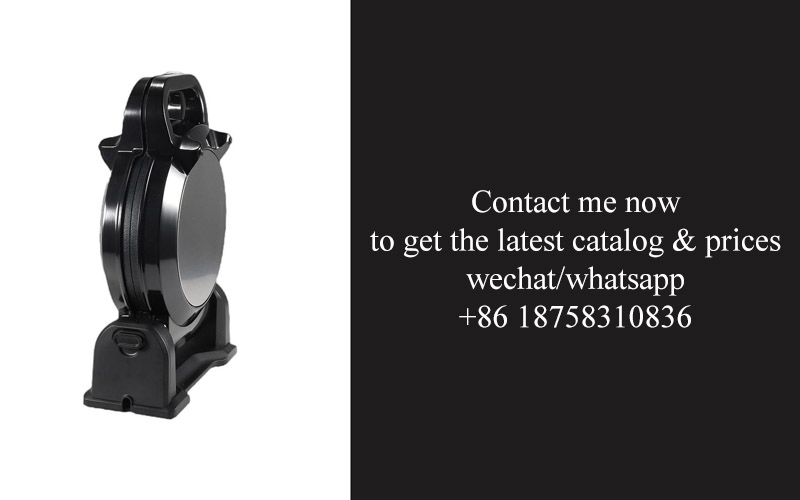
In an era where culinary innovation meets health-conscious consumers, the OEM air fryer market is undergoing a transformation. These compact appliances have surged in popularity, not just for their ability to cook deliciously crispy foods with minimal oil, but also for their sleek designs and versatility. As we delve into the intricacies of this sector, it becomes clear that the key to standing out in this competitive landscape lies in the art of custom mold making, which plays a pivotal role in shaping the future of OEM air fryer production.
The air fryer has quietly transformed the culinary landscape, emerging as a beacon of health-conscious cooking in homes across the globe. This surge in popularity can be attributed to the ever-growing demand for healthier eating habits, especially in the Western markets. For OEM air fryer manufacturers, this shift represents a golden opportunity to innovate and lead the charge in the kitchen appliance sector.
With the rise of fitness trends and the increasing awareness of the negative impacts of deep-frying on health, consumers are actively seeking alternatives that allow them to indulge in their favorite fried foods without compromising their dietary goals. The air fryer, with its ability to cook crispy and flavorful foods using minimal oil, has stepped into the spotlight as a go-to appliance for health enthusiasts and culinary adventurers alike.
The market is abuzz with discussions about the benefits of air frying, from reduced calorie intake to decreased trans fat consumption. This has sparked a wave of interest among consumers who are looking to diversify their cooking methods and incorporate more nutritious dishes into their diet. For OEM manufacturers, this trend is a green light to develop air fryers that cater to these evolving preferences, offering a range of functionalities and features that resonate with health-conscious consumers.
Innovation is key, and OEM air fryer manufacturers are stepping up their game by integrating advanced technologies and materials. Smart features such as automatic temperature control, pre-programmed settings for various foods, and even WiFi connectivity for remote monitoring are becoming standard in the latest models. These innovations not only enhance the user experience but also position OEM brands as leaders in the health and wellness market.
The customization aspect is also gaining traction, with consumers craving unique and personalized products. OEM manufacturers are responding by offering custom mold making services that allow for the creation of air fryers with distinctive designs, shapes, and sizes. This customization not only allows for a wider range of product offerings but also opens the door to niche markets and specialty items that can set a brand apart from the competition.
One cannot overlook the importance of aesthetics in the kitchen appliance industry. The design of an air fryer can be a significant factor in its appeal to consumers. With custom mold making, OEMs can produce air fryers with sleeker contours, ergonomic handles, and innovative attachments that make the cooking process more enjoyable and efficient. The ability to create custom molds also means that manufacturers can respond quickly to emerging design trends, ensuring that their products remain contemporary and in-demand.
Furthermore, the sustainability movement is gaining momentum, and eco-friendly practices are becoming a crucial consideration for consumers. OEM air fryer manufacturers that prioritize sustainable materials and manufacturing processes are likely to attract a loyal customer base. Custom mold making can also play a role in this by allowing for the creation of products that are not only visually appealing but also environmentally responsible.
As the health and wellness industry continues to expand, so does the opportunity for OEM air fryer manufacturers to grow their market share. By staying ahead of the curve and capitalizing on the rise of healthy cooking trends, these manufacturers can establish themselves as pioneers in the kitchen appliance industry.
The potential for innovation is limitless, from exploring new cooking technologies to developing air fryers that cater to specific dietary needs such as gluten-free or paleo-friendly options. By embracing the challenges and opportunities presented by the health and wellness revolution, OEM air fryer manufacturers can not only meet consumer demands but also exceed them, carving out a niche for themselves in a rapidly evolving market. The future is bright for those who are willing to invest in research and development, and who are bold enough to bring fresh ideas to the table.

In the ever-evolving landscape of kitchen appliances, the Western market has become a fertile ground for innovation, especially within the realm of healthy cooking. Understanding the nuances of this market is crucial for OEM air fryer manufacturers looking to capitalize on the latest trends. Here’s a closer look at the key demographics and preferences shaping the Western kitchen appliance sector.
The Western consumer is increasingly health-conscious, with a growing preference for low-fat, low-calorie cooking methods. This shift is driven by a plethora of factors, including rising obesity rates, the availability of nutritional information, and the influence of celebrity chefs and wellness influencers. As a result, there’s a significant demand for appliances that can help achieve these healthy cooking goals.
Millennials and Gen Z consumers, who are leading the charge in the kitchen appliance market, are particularly interested in smart features and sustainable products. They value convenience, but they also prioritize the environmental impact of their purchases. This demographic is more likely to invest in air fryers that not only promote healthy eating but also offer smart connectivity, allowing them to monitor and control their cooking through their smartphones.
Baby Boomers, on the other hand, are a demographic that has been traditionally underserved by the kitchen appliance industry. However, they are now catching up with the latest trends, particularly those that can help them maintain their active lifestyles. They are looking for air fryers that are easy to use, reliable, and can help them enjoy their favorite foods with a healthier twist.
In terms of preferences, Western consumers are gravitating towards air fryers that offer versatility. They want a single appliance that can handle a variety of cooking tasks, from frying to roasting and baking. This versatility is not just about the range of cooking modes but also about the size and capacity of the air fryer. Larger models that can accommodate family-sized portions are particularly appealing.
Energy efficiency is another key factor. With rising energy costs and a greater awareness of environmental issues, consumers are seeking appliances that consume less power. Air fryers that are Energy Star certified or have high energy efficiency ratings are more likely to catch the eye of environmentally conscious buyers.
Design and aesthetics play a significant role in the purchasing decision. Modern Western kitchens are often characterized by sleek, minimalist designs, and consumers are looking for air fryers that complement this aesthetic. The color, finish, and overall look of the appliance are as important as its functionality.
Safety features are also a major concern. Consumers want to be confident that their air fryers are safe to use, with non-toxic materials, stable bases, and clear instructions. The ease of cleaning is also a priority, as many consumers prefer appliances that are quick and straightforward to maintain.
Additionally, the rise of online shopping has changed the way consumers research and purchase kitchen appliances. They are more likely to read reviews, compare prices, and look for product demonstrations before making a decision. This means that OEM air fryer manufacturers need to ensure their products are well-represented online, with high-quality images and detailed descriptions.
Lastly, the preference for organic and natural ingredients is on the rise. Consumers are not only interested in how their food is cooked but also in what goes into it. Air fryers that can accommodate organic produce and natural cooking oils are likely to resonate with this segment of the market.
In conclusion, the Western kitchen appliance sector is a complex and dynamic market, with a diverse range of consumers and preferences. OEM air fryer manufacturers must understand these nuances to create products that not only meet the health and convenience needs of their customers but also align with their values and aesthetic tastes. By doing so, they can tap into a market that is poised for significant growth.
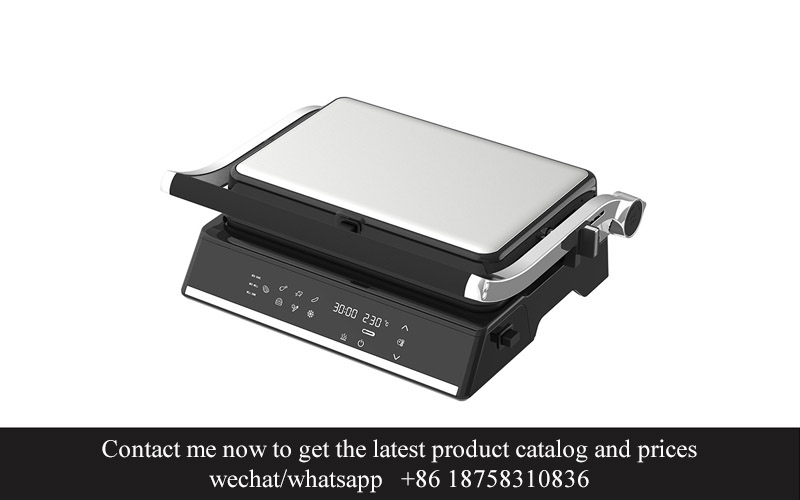
In the realm of kitchen appliance design, the mold making service stands as a cornerstone for creating unique and innovative air fryers. This specialized process is not just about crafting physical forms; it’s the heart and soul of bringing cutting-edge designs to life. Let’s delve into the intricacies and importance of this service.
The process of mold making begins with a vision, often sketched on a piece of paper or visualized in a CAD software. This initial concept is then translated into a 3D model, which serves as the blueprint for the mold itself. The mold is essentially a replica of the product, designed with precision to ensure that every detail is captured accurately.
The complexity of the mold making service lies in the materials used. Aluminum and steel are the most common choices due to their durability and heat resistance. However, the selection of the material also depends on the required production volume and the type of air fryer being designed. For high-volume production, aluminum is preferred for its lighter weight and cost-effectiveness. In contrast, steel is used for intricate designs that require a high degree of strength and precision.
Once the material is chosen, the mold making process involves several stages. The first step is to create a master model, which is a detailed replica of the product. This master model is then used to create a mold, which can be a single cavity mold for small production runs or a multi-cavity mold for larger volumes. The design of the mold is critical as it directly influences the final product’s quality and functionality.
The mold making process is a blend of art and science. The mold must be able to withstand the high temperatures and pressures of the injection molding process, which is used to produce the air fryer. It must also have the necessary channels and gates to allow the molten material to flow evenly and be removed cleanly after solidification. This precision is what allows for the creation of complex, sleek, and functional air fryer designs.
Innovations in mold making technology have pushed the boundaries of what’s possible in air fryer design. For instance, the use of CNC machining and 3D printing has allowed for the creation of molds with intricate details and minimal draft angles, which were previously unattainable. These advancements mean that designers can now explore more unique and aesthetic forms without compromising on performance.
Moreover, the mold making service also involves rigorous testing to ensure the mold’s reliability and efficiency. This includes testing for wear and tear, leakage, and the overall strength of the mold. A well-tested mold is crucial for producing air fryers that meet safety standards and consumer expectations.
Another aspect of the mold making service is the customization it offers. Each OEM air fryer manufacturer can have its specific design requirements, and the mold making service can cater to these needs. Whether it’s integrating advanced features like smart technology or creating a unique aesthetic that aligns with a brand’s identity, the mold making process allows for the tailoring of air fryers to meet diverse market demands.
The importance of the mold making service in the air fryer industry cannot be overstated. It is the secret ingredient that transforms a simple concept into a market-ready product. A well-crafted mold can lead to better product quality, reduced production costs, and increased efficiency in the manufacturing process. It also enables OEM manufacturers to differentiate their products in a crowded market, offering consumers a wider range of options that cater to their preferences and needs.
In conclusion, the mold making service is more than just a step in the production process; it’s a crucial element in the design and creation of unique air fryer products. With its ability to bring innovative and custom solutions to life, the mold making service continues to be a driving force behind the evolution of the air fryer industry.
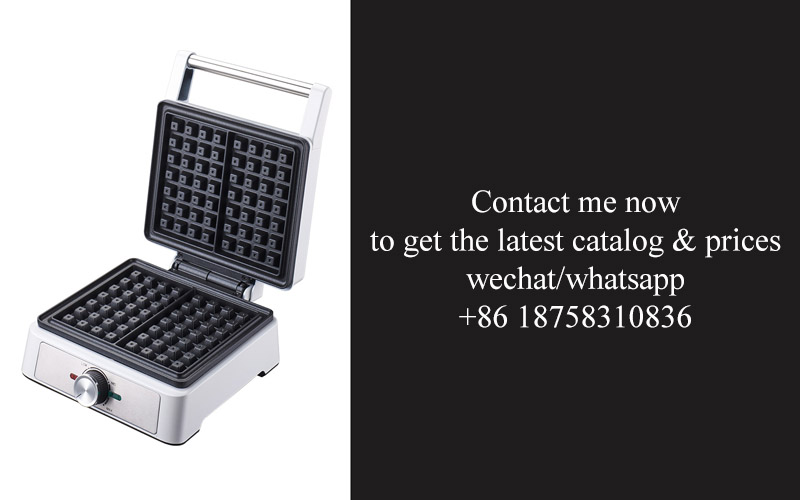
In the realm of OEM air fryer production, custom mold making stands as a cornerstone of innovation and quality. It’s not just about creating products; it’s about crafting solutions that cater to the unique demands of the market. Here’s why custom mold making is indispensable in this process:
The Precision of Custom MoldsMold making is an art form that combines engineering precision with creative design. In the context of air fryer production, custom molds are crafted to exact specifications, ensuring that each part fits seamlessly with the rest. This level of precision is vital because it directly impacts the performance and longevity of the air fryer. From the intricate details of the heating element to the sleek contours of the exterior, every component must align perfectly, and custom molds are the key to achieving that.
Enhancing Product FunctionalityThe design of an air fryer is not just about aesthetics; it’s about functionality. Custom molds allow manufacturers to experiment with various shapes and structures that enhance the air fryer’s performance. For instance, a unique mold might create a more efficient heat distribution system, improving cooking times and results. The ability to tailor the design to specific needs means that OEM air fryers can offer superior functionality compared to mass-produced models that might not be as finely tuned.
Cost-Effective ProductionWhile custom mold making might seem like an expensive upfront investment, it can lead to significant cost savings in the long run. By creating molds that are specifically designed for the OEM air fryer, manufacturers can reduce material waste, streamline assembly processes, and even decrease energy consumption. The precision of custom molds often means fewer defects and the need for rework, which can be costly and time-consuming.
Adapting to Market TrendsThe kitchen appliance market is dynamic, with trends shifting rapidly. Custom mold making enables OEM air fryer manufacturers to adapt quickly to these changes. Whether it’s a surge in demand for eco-friendly materials or a shift towards smart appliances, having the flexibility to modify molds allows for a rapid response to consumer preferences. This agility is crucial for staying competitive in a market where innovation is key.
Customization for Brand IdentityIn a crowded market, brand identity can make all the difference. Custom molds allow OEM air fryer manufacturers to create unique designs that resonate with their target audience and reinforce their brand image. A distinctive design not only catches the eye of consumers but also helps in creating a memorable user experience. This level of customization can be a significant differentiator, especially for brands looking to stand out in the marketplace.
Durability and ReliabilityThe durability and reliability of an air fryer are paramount to its success. Custom molds can be designed to ensure that the parts are not only functional but also robust. This attention to detail in the mold-making process translates into a product that can withstand the rigors of everyday use. By creating molds that facilitate the production of high-quality components, OEM manufacturers can build trust with their customers through a reputation for reliability.
Regulatory ComplianceThe kitchen appliance industry is heavily regulated, with strict standards for safety and performance. Custom mold making allows OEM air fryer manufacturers to create parts that meet these standards without compromising on design. A mold can be tailored to include specific features that comply with regulations, such as safety mechanisms or thermal protection, without detracting from the overall design.
Collaboration with Designers and EngineersCustom mold making is a collaborative effort that brings together designers, engineers, and mold makers. This cross-functional approach ensures that the final product is not just a reflection of technical capabilities but also a blend of artistic vision and practical innovation. The involvement of experts in each field helps to push the boundaries of what is possible in air fryer design.
In conclusion, custom mold making is a crucial aspect of OEM air fryer production. It offers precision, enhances functionality, provides cost-effective solutions, adapts to market trends, strengthens brand identity, ensures durability and reliability, complies with regulations, and fosters collaboration. These factors combine to make custom molds an essential element in the production of high-quality, innovative air fryers that meet the evolving needs of consumers.
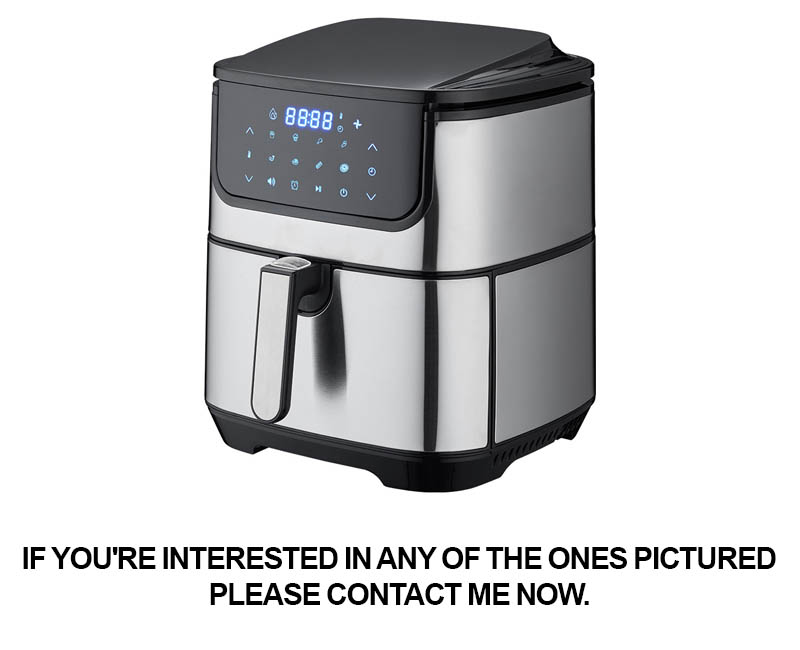
In the world of OEM air fryer production, the integration of custom molded parts has become a cornerstone of success. These tailored components not only enhance the functionality and aesthetics of the appliances but also set them apart in a crowded market. Let’s delve into a few case studies that showcase the impact of custom mold making on OEM air fryers.
The sleek and efficient design of the EcoChef air fryer stands as a testament to the power of custom mold making. The manufacturer chose to incorporate a series of intricate parts that were meticulously crafted to fit the brand’s signature style. The result was a product that not only performed well but also resonated with consumers who valued both form and function. The custom mold allowed for a precise fit of the parts, ensuring that the air fryer’s structure was both robust and visually appealing.
Another notable example is the AirGlow line of air fryers, which features a unique transparent design that allows users to watch their food cook. The transparency was achieved through a custom mold that was designed to accommodate the specialized glass panels. This not only provided a novel cooking experience but also opened up new marketing opportunities for the manufacturer, as the product became a conversation starter in kitchens across the globe.
The compact and portable nature of the QuickCook air fryer is thanks in large part to its custom molded components. The manufacturer focused on creating a lightweight yet durable unit, and the custom molds played a pivotal role in achieving this goal. The molds allowed for the precise shaping of parts that would otherwise be difficult to manufacture, resulting in a fryer that could be easily transported and stored without compromising on performance.
In the case of the SmartChef line, the inclusion of smart technology was made possible by custom mold making. The molds were used to create the intricate circuitry enclosures, which were both shockproof and water-resistant. This allowed the manufacturer to integrate cutting-edge features like temperature control and smart connectivity, making the air fryer not just a kitchen appliance but a smart device.
The HealthBake air fryer, designed with health-conscious consumers in mind, showcases the importance of custom molds in creating specialized features. The manufacturer utilized custom molds to create a fryer with a non-stick surface that was not only easy to clean but also safe for use with metal utensils. The molds enabled the creation of a unique design that incorporated a built-in filter system, which helped to reduce oil splatter and extend the life of the appliance.
The GourmetAir fryer series stands out for its high-end finishes, which are made possible through custom mold making. The molds were used to create parts with intricate textures and finishes that mimicked the look of high-end materials like brushed stainless steel or even wood. This attention to detail not only appealed to consumers who desired a premium look but also helped the product to command a higher price point in the market.
The FlexiCook air fryer, known for its versatility, owes much of its design to custom mold making. The molds were used to create a modular system that allowed users to add or remove parts to suit their cooking needs. This innovative approach was made possible by the precision and flexibility of the molds, which allowed for the creation of parts that could be easily assembled and disassembled.
The EnergySaver air fryer, which is designed to be energy-efficient, benefited from custom molds that were optimized for minimal material waste. The molds were designed to create parts with tight tolerances, which not only reduced the amount of material used but also improved the fryer’s heat distribution, making it more energy-efficient.
Each of these case studies highlights the importance of custom mold making in OEM air fryer production. From enhancing the aesthetics and functionality of the product to integrating new technologies and creating specialized features, custom molds are the secret ingredient that turns a standard air fryer into a market leader. By investing in these tailored components, OEM manufacturers can create products that stand out, satisfy consumer demands, and drive innovation in the kitchen appliance sector.
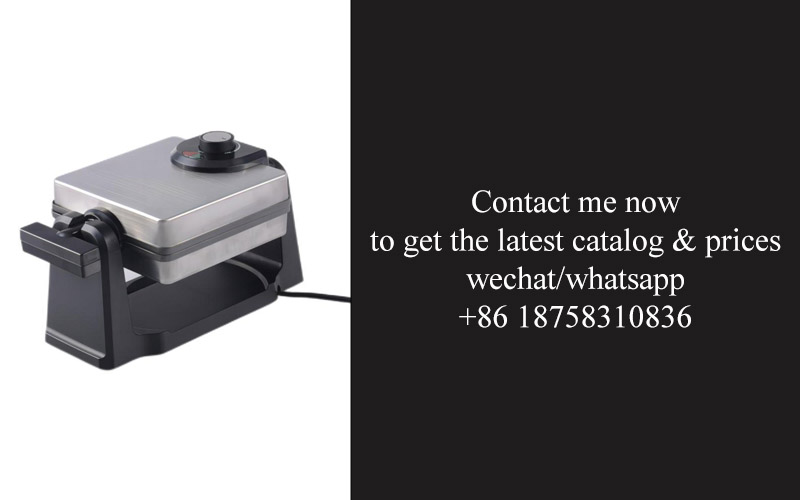
The journey of transforming an idea into a tangible product is a fascinating process, especially in the realm of OEM air fryer production. It’s a blend of creativity, technical expertise, and precision that takes a concept from mere imagination to a finished, market-ready product. Let’s delve into the intricate steps involved in this transformative journey.
Understanding the ConceptThe process begins with the concept, which can stem from market research, consumer feedback, or the innovative thoughts of designers and engineers. A clear understanding of what the product should offer—be it improved efficiency, unique features, or enhanced user experience—lays the foundation for the design phase.
Sketching and PrototypingOnce the concept is solidified, the design team starts sketching the initial ideas. These sketches evolve into detailed designs that are then translated into a 3D model. This 3D model serves as the blueprint for creating a prototype, which is a scaled-down version of the final product. Prototypes are essential for testing the feasibility of the design and for identifying any potential issues early on.
Material SelectionChoosing the right materials is critical in OEM air fryer production. Factors like durability, heat resistance, and safety play a significant role. Materials can range from various plastics and metals to more innovative materials like ceramics or advanced polymers. The selection process involves extensive testing to ensure that the chosen materials meet the product’s specifications and can withstand the demands of regular use.
Tooling and Mold MakingCustom mold making is a pivotal step in the production process. The mold is the tool that shapes the material into the desired form. High-quality molds are crucial for the production of precise, consistent parts. The mold-making process involves designing the mold, creating a master pattern, and then using it to produce the actual mold. Advanced techniques such as CNC machining, 3D printing, and injection molding are often employed to create these intricate molds.
Pilot Runs and TestingAfter the molds are ready, the production line shifts into high gear for pilot runs. This is a small-scale production to test the molds, the manufacturing process, and the final product. The aim is to uncover any issues that may have been overlooked during the design and prototyping stages. This phase also helps in fine-tuning the production parameters for optimal results.
Quality Control and AssuranceThroughout the production process, quality control is paramount. Each step is scrutinized to ensure that the air fryers meet the highest standards of safety, functionality, and design. Quality assurance checks include visual inspections, performance testing, and compliance with international standards. Any deviations from the standards are addressed immediately to maintain product integrity.
Production ScalingOnce the pilot run is successful and all quality checks are passed, the production can scale up. This involves mass-producing the air fryers, which can be a complex task due to the potential for human error and equipment malfunction. Efficient production planning and a robust supply chain are essential to manage the increased volume without compromising quality.
Packaging and ShippingAfter production, the air fryers are packaged according to the specifications of the market and the logistics of shipping. Packaging not only protects the product during transit but also serves as the first point of brand interaction for the consumer. Proper labeling and branding are applied to ensure that the product is easily identifiable and meets all regulatory requirements.
Final Assembly and TestingThe final stage before the product reaches the consumer involves the assembly of all components and a thorough testing process. This ensures that each air fryer functions as intended and meets all safety standards. Only when a unit passes all tests does it move forward to the next stage of the supply chain.
Distribution and Customer FeedbackOnce the air fryers are assembled and tested, they are distributed to retailers or directly to customers. This is where customer feedback becomes invaluable. Gathering insights from end-users helps in identifying areas for improvement and informs future product development.
Continuous ImprovementThe process doesn’t end with the product’s release. Continuous improvement is a hallmark of successful OEM air fryer production. Feedback from customers, technological advancements, and market trends all contribute to evolving the product design and manufacturing process.
In conclusion, the journey from concept to production is a meticulous and dynamic process. It requires a careful blend of creative design, advanced manufacturing techniques, rigorous testing, and a customer-centric approach. Each step is a piece of the puzzle that, when put together, results in a high-quality, innovative air fryer that meets the demands of a health-conscious consumer market.
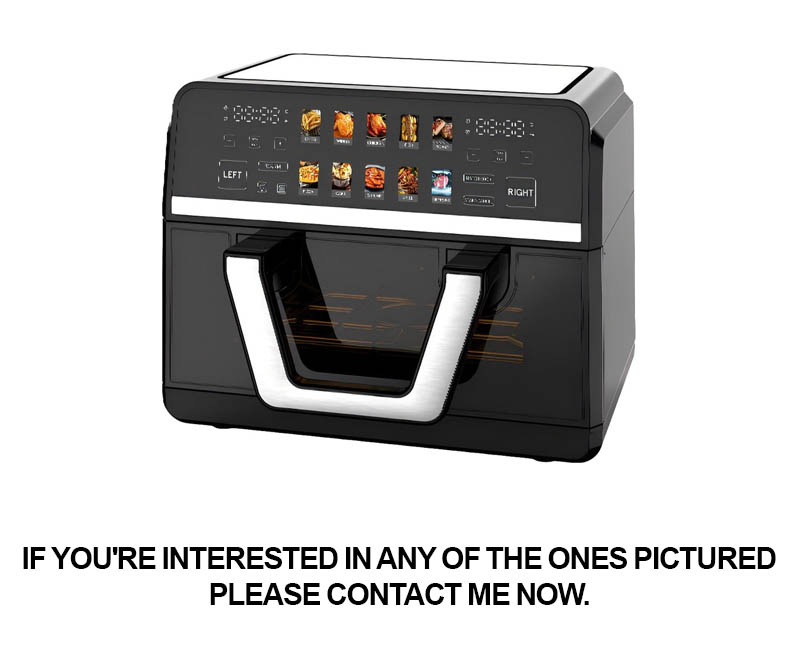
In today’s highly competitive OEM air fryer market, selecting a provider with advanced mold making capabilities can be the difference between a product that stands out and one that fades into the background. Here are some of the key benefits that come with partnering with such a provider:
Precision Engineering that Transforms Ideas- The art of mold making lies in transforming a designer’s vision into a tangible, functional part. Advanced mold making capabilities ensure that every detail is captured with precision, from intricate designs to tight tolerances. This level of engineering is crucial for air fryers, where the smallest flaw can affect performance and user experience.
Customization at Scale- Mass production doesn’t mean compromising on uniqueness. A mold-making provider can create custom molds that cater to specific market demands or customer preferences. Whether it’s a unique handle design, a sleeker profile, or a specialized cooking basket, these customizations can set an OEM’s product apart in a crowded market.
Cost-Effective Prototyping- The ability to create molds quickly and efficiently is a significant advantage for OEMs. Advanced mold making services offer rapid prototyping, allowing for cost-effective testing and refinement of products before full-scale production. This iterative process minimizes risks and ensures that the final product meets both technical and market expectations.
Enhanced Product Lifespan and Durability- The quality of the mold directly impacts the longevity of the air fryer’s components. A provider with advanced mold-making skills can produce parts that are not only aesthetically pleasing but also robust and durable. This attention to detail can lead to longer-lasting products that require less frequent replacement, saving consumers money and enhancing brand loyalty.
Reduced Lead Times- Time is of the essence in the appliance industry. An experienced mold-making provider can significantly reduce lead times by optimizing production processes and using high-speed machinery. This efficiency allows OEMs to bring their products to market faster, capitalizing on trends and staying ahead of competitors.
Innovative Material Solutions- Advanced mold-making providers often have the expertise to work with a wide range of materials, from traditional plastics to cutting-edge composites. This flexibility allows OEMs to explore new materials that can offer better thermal properties, lighter weight, or even sustainability benefits, without compromising on functionality.
Streamlined Supply Chain- A provider with advanced mold-making capabilities can offer a comprehensive service, from design and engineering to mold production and part manufacturing. This vertical integration streamlines the supply chain, reducing the risk of delays and ensuring that all components are perfectly matched and compatible.
Quality Assurance and Regulatory Compliance- The mold-making process is tightly regulated to ensure that products meet safety standards and industry regulations. A provider that excels in mold making also excels in quality assurance, delivering parts that are reliable, safe, and compliant with all relevant standards.
Collaborative Design Support- The best mold-making providers are not just manufacturers; they are partners in the design process. They offer expertise and advice that can lead to improvements in the product design, helping OEMs create not just a functional air fryer, but a superior one that exceeds customer expectations.
Continuous Innovation and Improvement- In the ever-evolving appliance market, innovation is key. A mold-making provider that invests in the latest technology and training can help OEMs push the boundaries of what’s possible with their air fryer designs. This continuous improvement ensures that the OEM’s product line remains at the forefront of innovation.
In summary, the benefits of choosing a provider with advanced mold-making capabilities are manifold. From the precision and customization of parts to the cost savings and efficiency of production, these providers are instrumental in helping OEMs deliver exceptional air fryers that resonate with consumers and stand out in a competitive landscape.
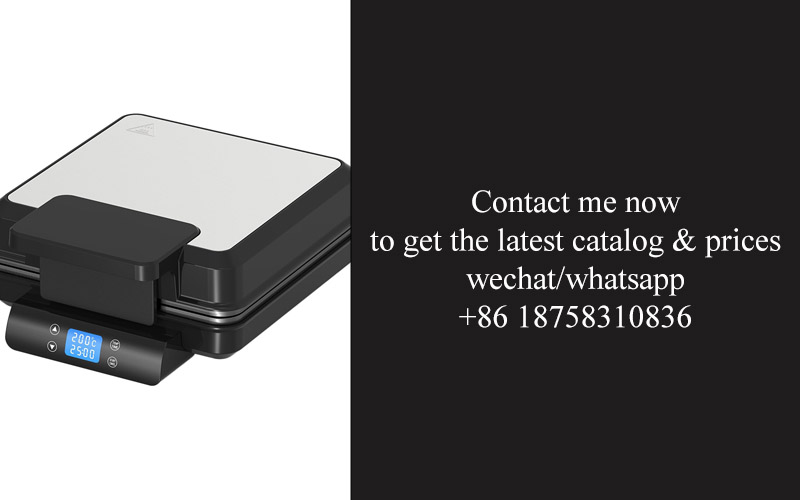
The future of the air fryer market is undeniably bright, and custom molded air fryers are set to play a pivotal role in shaping this trajectory. As consumer preferences evolve and technology advances, these specialized appliances are not just becoming a trend; they’re becoming a necessity. Let’s delve into the potential of custom molded air fryers in the market.
The integration of innovative features and ergonomic designs is a testament to the evolving nature of the air fryer industry. Custom molding allows manufacturers to create appliances that not only cater to specific needs but also offer a seamless and stylish user experience. As we look ahead, here are some key aspects that highlight the market’s potential:
1. Tailored FunctionalityCustom mold making enables the creation of air fryers with unique functionalities that go beyond the standard features. Whether it’s a compact model designed for small kitchens or a multifunctional unit that includes an oven and a steamer, the ability to tailor the design to specific uses ensures that customers find exactly what they’re looking for. This level of customization is becoming increasingly important as consumers seek appliances that integrate seamlessly into their lifestyles.
2. Enhanced AestheticsThe visual appeal of a product can significantly impact consumer purchase decisions. Custom molded air fryers offer a wide range of design possibilities, allowing manufacturers to create sleek, modern, and even artistic appliances. The use of advanced materials and innovative shapes can transform the air fryer from a mere kitchen gadget into a statement piece that enhances the overall look of the kitchen.
3. Improved PerformanceCustom molds can be crafted with precision to ensure optimal performance. This includes creating components that are more efficient, have fewer gaps, and are less prone to wear and tear. The result is an air fryer that not only looks great but also operates at peak efficiency, reducing energy consumption and prolonging the appliance’s lifespan.
4. Competitive EdgeIn a market where products are becoming increasingly homogenized, custom molded air fryers can provide a competitive edge. Manufacturers can differentiate their products through unique designs and features that resonate with specific customer segments. This differentiation can be a crucial factor in standing out from the competition and attracting a loyal customer base.
5. Sustainable ProductionThe use of custom molds supports sustainable production practices. By creating parts that are optimized for function and efficiency, manufacturers can reduce waste and minimize the environmental impact. Customization also allows for the creation of parts that can be easily repaired or replaced, further contributing to a more sustainable approach to product design.
6. Market Trends and Consumer BehaviorThe market trends suggest a growing demand for healthier cooking options. Custom molded air fryers can capitalize on this trend by incorporating features that promote health and wellness, such as non-stick coatings that are free from harmful chemicals or programmable settings that allow for easy monitoring of cooking times and temperatures.
7. Technological IntegrationThe future of air fryers is not just about cooking food; it’s about technology integration. Custom mold making can facilitate the integration of smart features such as touchscreens, Bluetooth connectivity, and even voice control. These innovations not only make air fryers more convenient but also position them as a central part of the smart kitchen ecosystem.
8. Global Market PotentialCustom molded air fryers have the potential to capture a significant share of the global market. As health consciousness spreads across the globe, consumers in various regions are looking for appliances that align with their values. By offering region-specific designs and features, manufacturers can tap into diverse markets and cater to a wide range of customer needs.
In conclusion, the role of custom molded air fryers in the market is poised to grow exponentially. As technology advances and consumer preferences shift, these specialized appliances will become more than just a cooking tool; they will be a symbol of innovation and lifestyle. The ability to offer personalized, efficient, and aesthetically pleasing products will be the key to success in this dynamic and evolving sector.
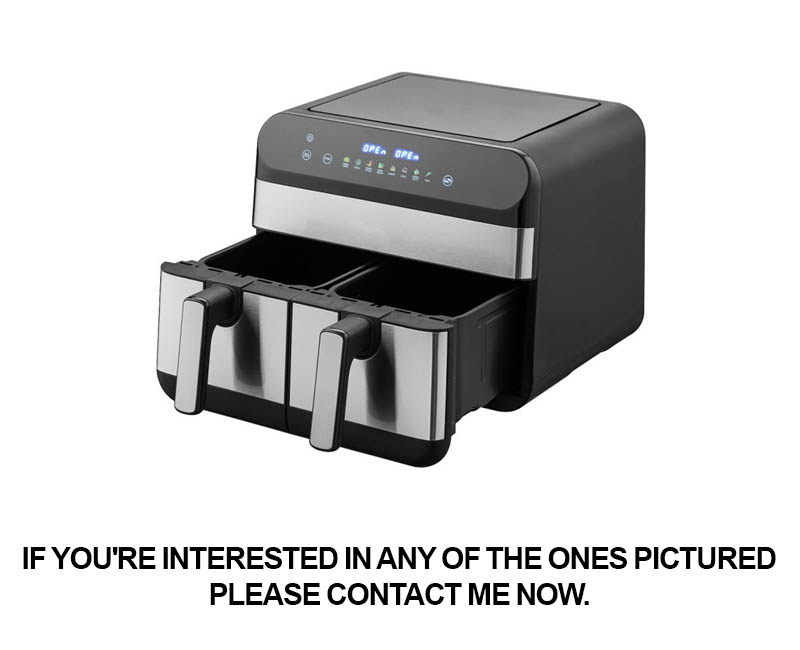
The OEM air fryer industry is a dynamic field where innovation is not just a buzzword but a driving force behind the latest trends. Embracing innovation means staying ahead of the curve and understanding the market’s ever-evolving demands. Here are a few key points to ponder as we reflect on the importance of innovation in this sector.
The integration of smart technology into air fryers has transformed the way consumers interact with their kitchen appliances. From touchscreens to voice-activated controls, these advancements have made cooking not only more efficient but also more intuitive. The ability to customize cooking settings and track the progress of meals through apps on your smartphone is a testament to the industry’s commitment to innovation.
In the world of OEM air fryer production, the design is everything. Unique shapes, innovative features, and sleek aesthetics all contribute to a product that stands out on the shelf. Custom mold making plays a pivotal role in this design process, allowing manufacturers to bring their visions to life. The precision and creativity involved in crafting molds for these devices are what enable the creation of air fryers that are both functional and visually appealing.
Sustainability is another area where innovation is making a significant impact. As consumers become more environmentally conscious, the demand for energy-efficient appliances has surged. OEM air fryers that are designed to use less electricity and have components made from recycled materials are not only good for the planet but also for the wallets of consumers. This eco-friendly approach is a clear sign of the industry’s forward-thinking mindset.
The rise of health consciousness has also fueled innovation in the OEM air fryer market. With the growing popularity of low-fat and low-carb diets, air fryers have become a staple in many kitchens. The ability to fry food with minimal oil while still achieving a crispy texture is a game-changer for those looking to maintain a healthy lifestyle. This shift in consumer preferences has led to the development of air fryers with larger capacities, adjustable temperature controls, and even air fryer lids for steaming and baking, expanding the versatility of these appliances.
The competitive landscape of the OEM air fryer industry is constantly changing. Brands that fail to innovate risk becoming obsolete. Companies that invest in research and development are better equipped to anticipate market trends and adapt their products accordingly. For instance, the introduction of air fryers with air filtration systems to reduce cooking odors or those with self-cleaning features demonstrate a commitment to convenience and ease of use.
Collaboration between OEM manufacturers and mold-making providers is essential for innovation to thrive. These partnerships allow for the seamless transition from an idea to a tangible product. By working closely with mold makers, OEMs can ensure that their unique designs are not only feasible but also cost-effective to produce. This synergy is what allows for the rapid iteration of products and the introduction of new features that capture the imagination of consumers.
The importance of innovation in the OEM air fryer industry cannot be overstated. It drives the development of new technologies, improves existing products, and ultimately shapes the market landscape. As we look to the future, it’s clear that the role of custom molded air fryers will only continue to grow. The industry is poised to see further advancements in materials, design, and functionality, all aimed at providing consumers with appliances that not only meet their needs but exceed their expectations.
In a world where technology advances at a breakneck pace, the OEM air fryer industry must remain agile and forward-thinking. By staying attuned to consumer demands, investing in cutting-edge mold-making technologies, and fostering a culture of innovation, manufacturers can ensure that their products remain relevant and competitive. The key is to remember that innovation is not just about creating something new—it’s about creating something better.
As we reflect on the journey of the OEM air fryer industry, it’s evident that the path forward is paved with constant improvement and the pursuit of excellence. The industry’s ability to adapt to changing tastes and technologies is what will define its success. By embracing innovation, OEM air fryer manufacturers are not only shaping the present but also paving the way for the future. It’s a testament to human ingenuity and the never-ending quest for better, more efficient, and more enjoyable cooking experiences.